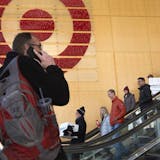A startup firm in Crystal, Minn., believes it has an answer to rising violence in Minnesota's hospitals — a new kind of irritating spray that subdues attackers while minimizing harm to bystanders and victims.
Founder Jody Allen Crowe launched Crotega in 2014 after he said his research for a book on school shootings highlighted the need for more protective tools in the minutes before police officers respond. The former school superintendent then focused on solutions after a 2021 shooting in a Buffalo, Minn., clinic left one person dead and four injured.
"Thirty seconds to a minute of violent behavior can result in severe injuries if people don't have any way to stop it," Crowe said.
Minnesota hospitals have discovered this the hard way with an increase in attacks by delirious patients, distraught relatives and angry visitors. About 630 hospital employees missed work to recover from violence-related injuries from 2021 through 2022, triple the total from a decade earlier, according to the Bureau of Labor Statistics.
Crowe worked with a chemist to create a chemical irritant called REPULS. It uses propionic acid, the same food-grade chemical that creates flavors and holes in swiss cheese. Pepper sprays are based on capsaicin, the chemical derived from hot peppers. Both cost about $16 for a standard, palm-sized bottle.
While effective, pepper sprays can spread in plumes that overwhelm attackers but also cause bystanders to gasp for breath and wipe their burning eyes — especially in the confines of a hospital room or hallway, Crowe said. It can seep into ventilation ducts, potentially exposing others in a hospital who have respiratory conditions such as asthma.
Security officers carried pepper spray for years at HCMC in Minneapolis but didn't use it in emergencies, said Michael Ramos, a security supervisor for the urban trauma center.
"None of our officers did, because it contaminates everyone," he said. "It shuts down part of the hospital [for cleanup afterward] because it's such a potential irritant. And if we have to wrestle with the guy, we get contaminated too."



